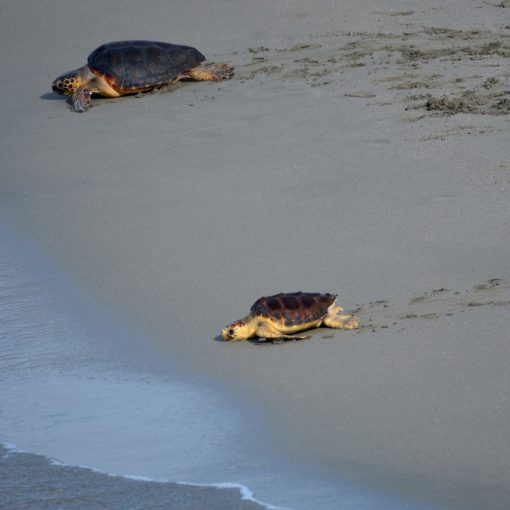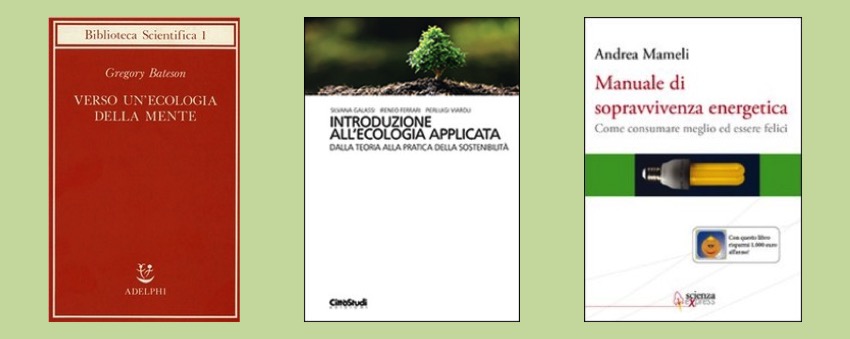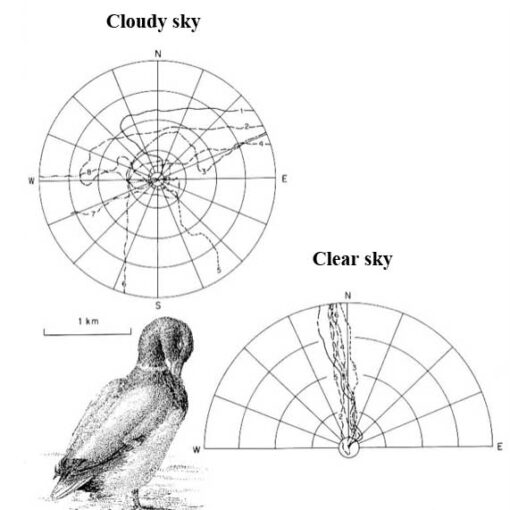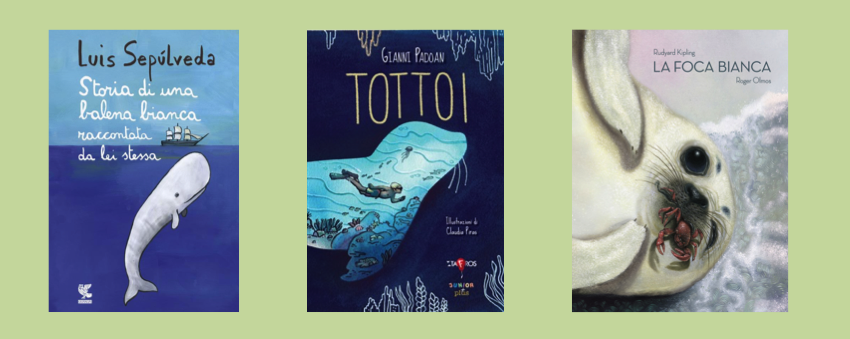
Once again the sea, the mother and matrix of our existences, fascinates and involves us, taking us by the hand, to let us know its mysterious creatures that ask us only for respect.
Our monthly appointment this time is aimed above all at children and teenagers; for them, we have chosen three books that talk about seals and other marine mammals that men have hunted and persecuted.
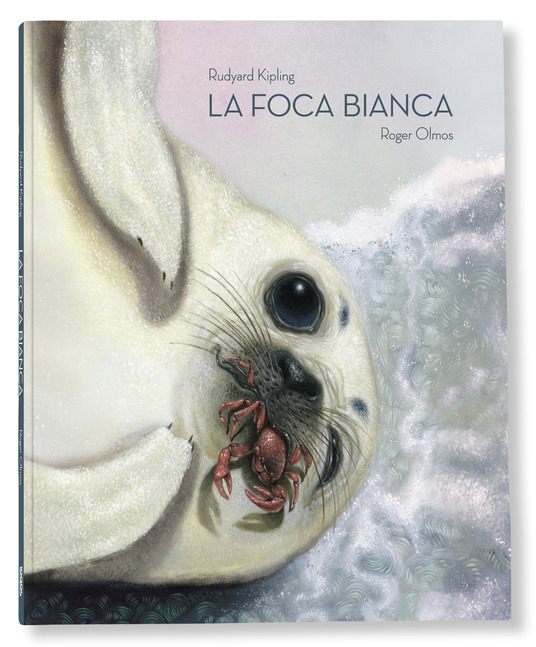
Pages: 64, Paperback| EAN:9788857610245
Rudyard Kipling enchants us once again with one of his stories from the Jungle Book. “The White Seal”, in a new translation, was reprinted for the Logos editions in 2019, and embellished with the beautiful illustrations by Roger Olmos, which involve us in the adventures of Kotick, the son of Matka and Sea Catch, born on the beach of Novastoshnah.
Kotick is a special baby seal: he is completely white! Never before has such a white puppy been seen on Novastoshnah beach, even though it has a big head and light blue eyes like everyone else. He spends his childhood between the loving care of his mother and raids with his companions; he becomes a very skilled swimmer, discovering each time the beauties and the dangers of the sea. He doesn’t care about the rules, he’s a rebel and is willing to do anything to make his dreams come true. But then some men arrive and carry out a slaughter of seals and then Kotick, who does not accept like the others to resign himself to the fate of being killed at the hands of men, begins to search for himself and his companions a new island where he can live in peace and in harmony; he will not rest until, finally, he has found her.
“A timeless classic, the adventure of a white seal determined to fight for the good of her colony, but also the story of a son who rebels against tradition and the will of his father to pursue his dreams. A story of love and courage for young people who will change our future ”.
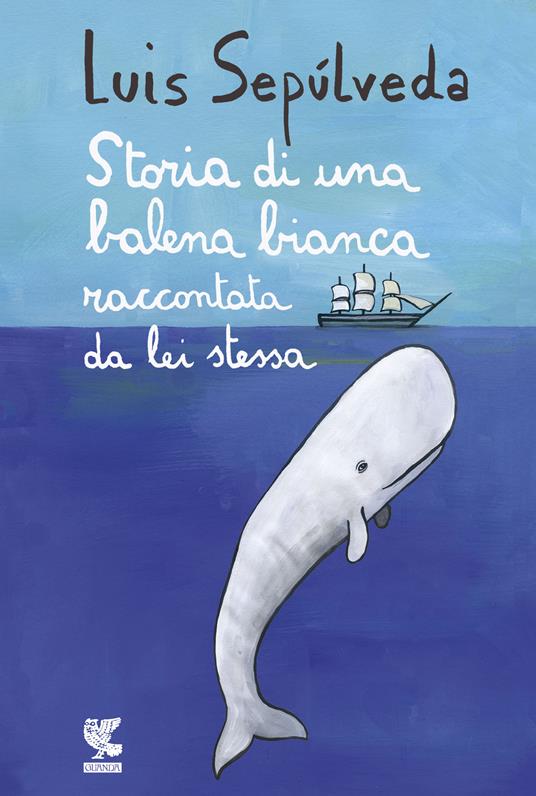
Publisher: Guanda, 2018 | Pages: 128, Hardcover| EAN: 97
A child collects a shell on a beach on the other side of the world, in Chile. A voice coming from inside the shell begins to tell a story. It is the voice of the great white sperm whale who, in the immense solitude and depth of the sea abysses, has dedicated his life to honoring the ancient pact between whales and the People of the Sea in order to protect that stretch of sea from the raids of other unscrupulous men. The task was entrusted to him by an elderly Sperm Whale many years earlier. These men arrive in large whaling ships, without respect or gratitude, they kill, rob, and destroy everything, they take everything away, even if they don’t need it. The Sperm Whale, the great white whale, new Moby Dick, now takes the floor and tells us his version of whaling, so far only told by whalers.
To Luis Sepulveda, a writer very dear to us, is dedicated the cartoon video of Operation Nun Seal “Storia di una foca monaca raccontata da lei stessa”. (“Story of a monk seal told by herself”). From him, we borrowed the title…
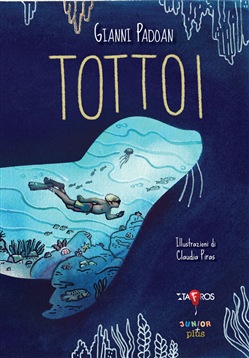
Publisher: Taphros Editrice, 2021 | Pages:184, Paperback
EAN: 9788874322206
Tottoi is a teenage boy son of Sardinian emigrants in Germany, who, on the death of his mother, returns with his father to Sardinia in Cala Gonone. He is a curious boy, eager to know and explore an environment that is completely new for him. The sea is an exciting discovery and here, during an excursion to the Grotta del Bue Marino, he meets the last monk seal. He has recently given birth to a puppy on a small beach inside the cave. Thus began a beautiful friendship between Tottoi, the seal and her pup called Zabaione because of the yellowish spot on the belly typical of monk seal pups. Between sea adventures, cliffs covered with junipers and griffins high in the sky, Tottoi discovers Sardinia and the value of its nature and so, with his friends, he will fight to defend the two seals from an unscrupulous American entrepreneur, intent on capturing Zabaione and his mom to take them to his private zoo in Florida.
The author Gianni Padoan, ranked by UNESCO among the ten best children’s writers in the world, tells us a simple story that contains a powerful universal message of peaceful coexistence.
From the book in past years a very popular cartoon was made in Japan, which never arrived in Italy.
“Tottoi”, published by Bompiani in 1980, was reprinted by Taphros Editrice in 2021 with splendid illustrations by Claudia Piras, a young artist from Dorgali.
Credits
Author: Maria Beatrice Lupi. Naturalist,an expert in training, planning for sustainable development, participatory methodologies and European planning. Currently, she is involved in dissemination and education for sustainability.
Translation by Maria Antonietta Sessa

